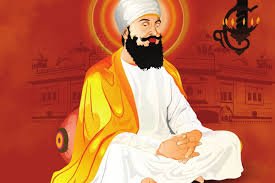Guru Tegh Bahadur’s Shaheedi Divas 2024: A Tribute to the Ninth Sikh Guru
Introduction to Guru Tegh Bahadur’s Shaheedi Divas
Guru Tegh Bahadur’s Shaheedi Divas (Martyrdom Day) is a significant event commemorated by Sikhs worldwide, particularly in 2024, marking the supreme sacrifice of the ninth Sikh Guru. Guru Tegh Bahadur was a key figure in Sikhism, known for his unwavering commitment to justice, equality, and religious freedom. He was martyred in 1675 under the Mughal emperor Aurangzeb’s reign for refusing to convert to Islam, making him a symbol of resistance against tyranny.
Guru Tegh Bahadur’s Martyrdom and Its Significance
Guru Tegh Bahadur’s martyrdom is remembered for its profound impact on the Sikh community and its role in protecting religious freedom. When the Mughal empire under Aurangzeb began forcing conversions of Hindus, Guru Tegh Bahadur stood up for the rights of the oppressed, even at the cost of his life. His refusal to convert and his subsequent execution laid the foundation for the Sikh struggle against oppression, establishing him as a martyr for freedom of belief.
The Guru’s Legacy: A Continuing Influence
Guru Tegh Bahadur’s legacy is central to Sikhism. His teachings of courage, dignity, and compassion continue to inspire millions today. His martyrdom also helped solidify the Sikh community’s commitment to upholding justice and protecting religious minorities from persecution. The annual observance of Shaheedi Divas serves not only as a remembrance of his sacrifice but also as a reminder of the values he upheld.

Why this News is Important
Religious Freedom and Justice: A Core Sikh Value
The martyrdom of Guru Tegh Bahadur represents a pivotal moment in the history of religious freedom. His death was a powerful protest against the forced religious conversions imposed by the Mughal emperor. The day serves as an annual reminder to the people of India and beyond of the critical importance of protecting individual religious beliefs and maintaining the right to practice one’s faith freely.
Guru Tegh Bahadur as a Symbol of Resistance
Guru Tegh Bahadur’s sacrifice highlights the Sikh community’s long-standing commitment to fighting for justice, even at great personal cost. His role as a protector of religious rights and a symbol of resistance to tyranny is a cornerstone of the Sikh faith. For students preparing for exams, understanding the significance of this day helps highlight the contributions of religious leaders in shaping Indian history and the moral and ethical frameworks that guide societal values.
The Continuing Relevance of Guru Tegh Bahadur’s Martyrdom
The teachings and legacy of Guru Tegh Bahadur are still relevant today. In a world where religious intolerance and human rights violations continue to persist, his life serves as a beacon for the global fight against injustice. Commemorating Shaheedi Divas in 2024 reinforces the importance of standing up for justice, fairness, and religious liberty, values that remain at the heart of many civil service and social welfare policies.
Historical Context: Background of Guru Tegh Bahadur’s Martyrdom
Guru Tegh Bahadur and the Mughal Empire
Guru Tegh Bahadur was born in 1621 in Amritsar, Punjab, during a time when the Mughal Empire ruled over most of India. Under Emperor Aurangzeb, the Mughal empire became more repressive, especially toward Hindus and other religious minorities. Forced conversions and the destruction of temples were common, prompting widespread suffering among religious communities.
Guru Tegh Bahadur’s Stand Against Forced Conversions
In the 1670s, the Mughal emperor Aurangzeb initiated a campaign of forced conversions of Hindus, particularly in Kashmir. Guru Tegh Bahadur, known for his commitment to the protection of all faiths, was approached by Kashmiri Hindus seeking his help. In response, Guru Tegh Bahadur stood up against this repression and sacrificed his life, refusing to renounce his faith or convert to Islam. His martyrdom on November 24, 1675, became a powerful act of defiance and remains a defining moment in Sikh history.
Impact on Sikhism and Indian Society
Guru Tegh Bahadur’s sacrifice did not just solidify his role as a religious leader but also solidified the Sikh community’s resistance to oppression. His martyrdom led to the formation of the Khalsa under Guru Gobind Singh, which furthered Sikhism’s mission to safeguard the freedom of faith. Today, the Shaheedi Divas serves as both a solemn remembrance and a call to action to uphold religious tolerance and social justice.
Key Takeaways from Guru Tegh Bahadur’s Shaheedi Divas
| S.No. | Key Takeaway |
|---|---|
| 1 | Guru Tegh Bahadur was martyred in 1675 for refusing to convert to Islam under Mughal emperor Aurangzeb. |
| 2 | His martyrdom is remembered as a symbol of resistance against forced religious conversions and oppression. |
| 3 | Guru Tegh Bahadur’s sacrifice laid the foundation for Sikhism’s commitment to justice, equality, and religious freedom. |
| 4 | The observance of Shaheedi Divas is significant for promoting values of human rights and religious tolerance. |
| 5 | Guru Tegh Bahadur’s legacy continues to inspire global movements for justice and freedom of belief. |
Important FAQs for Students from this News
Who was Guru Tegh Bahadur?
Guru Tegh Bahadur was the ninth Sikh Guru, known for his teachings on justice, equality, and religious freedom. He sacrificed his life in 1675 to protect religious minorities from forced conversions under the Mughal emperor Aurangzeb.
Why is Guru Tegh Bahadur’s Shaheedi Divas observed?
Shaheedi Divas is observed to honor Guru Tegh Bahadur’s supreme sacrifice in standing against tyranny and religious oppression. It serves as a reminder of the importance of religious freedom and human rights.
What was the significance of Guru Tegh Bahadur’s martyrdom?
His martyrdom highlighted the Sikh commitment to justice and the protection of religious beliefs. It inspired the formation of the Khalsa and strengthened Sikhism’s principles.
When did Guru Tegh Bahadur attain martyrdom?
Guru Tegh Bahadur attained martyrdom on November 24, 1675, after refusing to convert to Islam under the orders of Aurangzeb.
How is Shaheedi Divas celebrated?
The day is marked by prayers, kirtans, and community gatherings in gurdwaras worldwide. Sikhs reflect on Guru Tegh Bahadur’s teachings and his sacrifice for justice and religious liberty.
Some Important Current Affairs Links


















